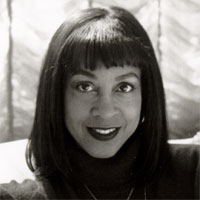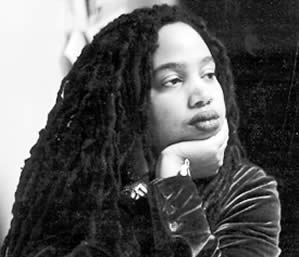
December 4, 1969 was the date that Black Panther Party members Fred Hampton and Mark Clark were assassinated by members of the Chicago Police department (in concert with the FBI). Poet Haki Madhubuti (Don L. Lee) immortalized their murders in his poem "
One-Sided Shoot-Out". At 20-years of age at the time of his death, Fred Hampton was very much the template for the next generation of youth activists--black or otherwise. In this conversation with journalist and author
Eddie B. Allen, Jr., historian Craig Ciccone recounts the life that was Fred Hampton and the legacy he left behind.
***
Remembering Fred HamptonBy Eddie B. Allen Jr.
Outside of Oakland, California where the organization was born on Oct. 22, 1966, relatively few media outlets or community observers paid attention to the Black Panther Party for Self Defense’s 40th anniversary reunion. Reasons vary, but among them is the lingering misconception that the Black Panthers – first beleaguered by politically motivated frame-ups, imprisonment and even murder of its members, and later a victim of weakness to drug abuse, infighting and exploitative behavior – are hardly worth remembering. So firmly emblazoned onto the nation’s selective memory are the myths contributing to Panther prejudice that I had a conversation with one editor of a so-called “alternative” weekly newspaper, having pitched to him the idea of a 40th anniversary piece, and he replied without hesitation: “Beyond the rhetoric, the Panthers were really sort of a criminal organization. I’d be more interested in a piece that examines the sort of revisionist history of the Panthers.” This was a black editor at a tabloid more known for its investigative, enlightening perspectives in journalism, but his response to my offer was one I might’ve expected from a conservative, right-wing daily paper. Like, I’m certain, much of America, he’d disregarded the free breakfast program founded by the Panthers to help feed poor schoolchildren, the voluntary monitoring of arrests to help prevent police brutality, the rigorous studying of freedom movements throughout the world and other selfless acts. The militancy and gun-bearing images still seen today on posters and t-shirts are all he considered, apparently seeing little he regarded as “criminal” in the way the government often responded to the Panthers assertion of the right to defend and protect black communities. One such response was the murder of Fred Hampton, a young rising star in the Chicago chapter of the Party, who was poised for national leadership when he was killed in a police “raid” as he slept, defenseless, in bed. In my hopes to create an item for readers that recognizes the more complete aspects of Black Panther Party history and relevancy 40 years after its birth, I contacted the leading scholar in the life and contributions of “Chairman Fred,” as Hampton was called. Historian Craig Ciccone, who I consider a friend, not only agreed to this exclusive interview for Newblackman to discuss Hampton; he also shared insights about why perceptions of the Panthers have changed so little.
Newblackman: Why do you suppose Chairman Fred is viewed differently in popular culture than the other leaders, like Huey Newton and Bobby Seale.
Craig Ciccone: Well, certainly Bobby Seale is more widely known, having had more exposure, especially at the national level. But to try and compare Seale’s position as chairman and Hampton’s position as deputy chairman is kind of unfair for obvious reasons. Seale held his post from the party’s inception in 1966 until Elaine Brown took over the chairmanship in 1974, while Hampton served as Illinois’ deputy chairman for little over a year until his assassination in December of 1969. In fact, Seale was incarcerated for much of 1969, stemming from his alleged complicity in the torture-murder of a Connecticut BPP member, as well as being a defendant in the infamous Chicago Eight conspiracy trial. Consequently, many of Hampton’s activities were geared towards freeing Bobby Seale, holding weekly “Free Bobby” rallies in front of the federal court house where the trial was being held. One of the reasons Fred Hampton was chosen to take on national leadership was because so many of the national leaders were in jail. Eldridge (Cleaver) was in Algiers in exile, Huey was in prison since ‘67, accused of murdering a police officer, by the time Hampton traveled to California in early November 1969, David Hilliard, the party’s chief of staff, was considering joining Eldridge in Algiers. It was decided that he would take over the Party's national leadership, if David Hilliard also had to go into exile. Hampton was certainly marked for ascendancy to the Party's leadership.
Newblackman: Was he assassinated to prevent his ascendancy, or because of his mobilizing efforts, or both?
CC: Both. Hampton forged a local reputation at the grassroots level, in fact, while he was still in high school. Where a lot of us are involved in band and sports, he was taking on the problems of his community. He was a student of the late Kwame Ture (Stokley Carmichael) and black nationalism before he joined the Black Panther Party. And it wasn't that he was a disenfranchised urban youth, like so many of the party recruits. He came up from a relatively middle-class upbringing. They lived in a completely integrated neighborhood outside of Chicago in Maywood – I think it was 50 percent white and 50 percent black. It wasn't as if he was from a poor or a broken home, so he wasn't operating in that context, but he went out of his way to understand people's problems and worked towards their solutions. He was able to organize at a grassroots level. He was the president of the local youth branch of the NAACP, which had been floundering, and under his leadership its membership rose astronomically. He in essence became the fall guy for any charges that the police were able to levy—unlawful assembly, conspiracy to incite. He was the one person many local organizations and leaders turned to when there were community problems to be faced, including student relations and labor. This, of course, quickly brought him to the attention of the authorities. A police file was opened in 1966, followed by an FBI file in late 1967. In other words, he was monitored by local, state, and federal authorities every day of his life from the time he was eighteen years old until his assassination in 1969.
 Newblackman
Newblackman: Is that what made him so successful in rising through the ranks, compared with others who weren’t part of the national leadership?
CC: He attracted a lot of attention very quickly because of his success, and because he was such a great orator. He could speak in front of any audience at any time. Malcolm X had that same ability. Fred Hampton could speak to a white suburban audience and then come down to Chicago and speak to urban audiences in the right diction and tone, and that made him immensely popular. First he became chairman of the Illinois Panthers and what a lot of people don’t realize is that part of his job was to coordinate all of the Midwest chapters of the BPP, so he was traveling to Indiana, Detroit, New York and various chapters east of Chicago.
Newblackman: What led up to his assassination?
CC: Two things took place in 1969 that made his assassination absolutely necessary (in the eyes of authorities). One was that, like Malcolm X did and like Huey Newton and Bobby Seale did, he was trying to take the issues and the plight of black America to an international stage. Hampton did that in an unlikely place, and that was Canada. He went on an extensive tour of Canadian universities in late November 1969. He packed whatever room or auditorium he was speaking with faculty and students in lily-white Canada, then met with local leaders of one of Canada’s oppressed and marginalized groups of natives, the Métis. The second reason—which I’ve already mentioned—being that the national leadership was about to shine a national spotlight on Hampton. He had to be “neutralized,” using the FBI’s own euphemistic term. One of the reasons that Huey Newton, Eldridge Cleaver – you look on the list and I think it's about 39 Panthers in a less than 10-year span who were killed – none of them were national leaders. The threat was on the local level because on the local level the organizing was most effective. (To neutralize a threat) it's quieter that way, and it became absolutely necessary that he be taken out in a manner that was fitting of the Black Panther Party's media image. If you concentrate on the fact that they’re loud, that they’re violent, that they carried guns, then you get people saying, “Oh, the Black Panther Party, they got what was coming. They deserved it." If Fred Hampton had gotten into the national spotlight, he would've been untouchable.
Newblackman: But how was there not more of an outcry, given that he was asleep when they shot him to death? Did those details not get out to most of the public?
CC: There was an incredible amount of public outcry, at least locally. Nationally, it goes back to the media image of the BPP—“Oh, another Panther shot in a police shoot-out? What a shock.” And one of the reasons there was such public outcry was because it was charged from very early on that Hampton was drugged, which was established by the second of three autopsies Hampton would undergo over the span of three months following his assassination, the last one conducted after he'd already been buried. High concentrations of barbiturates rendered him sluggish and unresponsive. Three people tried to shake him violently to get him to take cover, and he didn't move. The BPP in Chicago and even local politicians called for investigations of the killing. Not to mention the fact that the BPP began conducting public walk through tours of Hampton’s apartment just hours after the shooting. So there was certainly plenty of local outcry. And despite the efforts of elected officials for more thorough investigation, officially, it was marginalized at the coroner’s inquest and subsequent proceedings when it was ruled a justifiable homicide and none of the officers in the Special Prosecutions Unit – made up of Chicago police recruits who did the raid on behalf of the Cook County State’s Attorney – were ever prosecuted.
Newblackman: You’ve done about a dozen years of research and a lot of things still haven’t come out about Fred Hampton’s life or death. What needs to happen in order for more research to be made available?
CC: It's usually only in connection with his assassination that Hampton’s name is mentioned, and it was largely exploited by the Black Panther Party. But a primary step in retrieving information is getting documentation from the FBI, with the redactions (withheld portions of records) included. We've just scratched the surface and will continue to be scratching the surface until we can make a concerted effort to get these files released.
***
Many thanks to Eddie B. Allen for allowing NewBlackMan to publish this conversation. Photos courtesy of Craig Ciccone.







